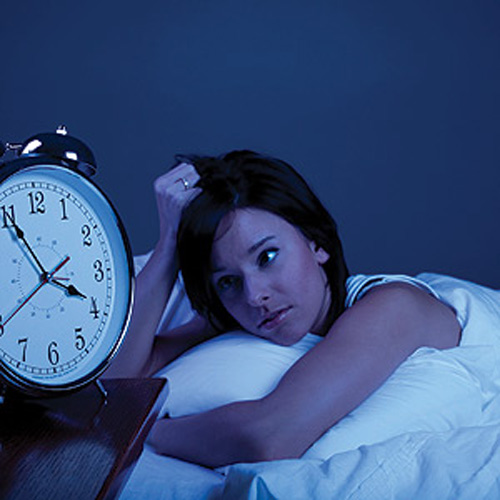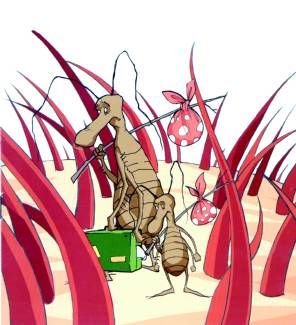Dr. Natalia Panasjuk-Paliwoda treats 12-year-old Kathleen MacIsaac using acupuncture to help relieve the Woburn sixth-grader’s headaches at Long Life Acupuncture in Braintree.
There are some things a pill can’t fix.
Twelve-year-old Kathleen MacIsaac learned that the hard way when she started getting headaches so painful they landed her in the emergency room.
After scans and specialists ruled out a brain tumor or injury, and five different medications failed to make a difference, she began to experiment with alternative treatments. Now, the Woburn sixth-grader has become a big fan of acupuncture, which she says doesn’t hurt at all and is really relaxing.
There’s plenty of evidence to show that acupuncture is an effective treatment for headaches in children, but most doctors wouldn’t have suggested it, and her mother, Lisa, a nurse, admits it felt weird at first to try an approach she hadn’t learned about in school.
Her doctor’s urging, Lisa MacIsaac said, made her more open-minded to such an alternative treatment.
On the other hand, as many as 70 percent of families with chronically ill kids use alternative therapies, according to a new study — and many of them don’t talk about these treatments with their doctors.
Doctors specializing in integrative medicine — the melding of conventional and alternative treatments — say that it’s crucial for patients and doctors to work together to find the safest therapies that are most likely to help children. Doctors need to be more accepting of approaches parents are trying with their kids, they say, and families need to be more willing to discuss these approaches with doctors.
 “I’m open to whatever they want to try, as long as I have the opportunity to explore whether it’s going to be helpful or harmful,” said Dr. W. James King, a consulting pediatrician at Children’s Hospital of Eastern Ontario and a leader of the new study, published this month in the journal Pediatrics. “If we can’t show it’s going to be helpful, we want to be sure it’s not going to be harmful.”
“I’m open to whatever they want to try, as long as I have the opportunity to explore whether it’s going to be helpful or harmful,” said Dr. W. James King, a consulting pediatrician at Children’s Hospital of Eastern Ontario and a leader of the new study, published this month in the journal Pediatrics. “If we can’t show it’s going to be helpful, we want to be sure it’s not going to be harmful.”
It’s not clear whether the use of complementary and alternative medicines — often referred to as CAM — is rising in children, because studies like King’s are just beginning to quantify its use. The definition of CAM varies widely, and can include a wide range of supplements and therapies, from vitamins and herbs, to yoga, acupuncture, massage, chiropractic or osteopathic manipulation, and a Japanese stress-reduction technique called Reiki.
King’s study looked at children in five clinics at two Canadian hospitals: cardiology, gastroenterology, oncology, neurology, and respiratory. The sicker the child, the more likely the family was to use complementary therapies, King said. Children were also more likely to receive alternative treatments if their parents had already tried them. And the older the child, the more frequently parents used alternative therapies, King said, perhaps out of frustration that conventional treatments weren’t working.
That frustration has driven up the popularity of complementary medicine.
“The current widespread interest in this among the general public I think is fueled by dissatisfaction with conventional care that is sometimes perceived as being limited, compartmentalized, specialized, and doesn’t look at the whole person,” said Helene Langevin, director of the Osher Center for Integrative Medicine at Harvard Medical School and Brigham and Women’s Hospital.
Other families, particularly recent immigrants, arrive at the doctor’s office with as much or more faith in remedies indigenous to their home countries as western medicine.
Dr. Sean Palfrey, a professor of pediatrics and public health at Boston University and Boston Medical Center, said he once had a patient, an infant, who was dying of a genetic disease. There was nothing western medicine could do to change that outcome.
The family, originally from Somalia, wanted to “coin” the child, a practice in which a heated coin is placed on the skin to remove harmful substances, leaving red marks and sometimes minor burns. Palfrey said his first instinct was to protect the baby from these burns. But then he realized that the family would feel more at peace if they believed they had tried this remedy first. He discussed ways they could make the ceremony safer for the child and then allowed them to go ahead with it.
Palfrey said he became convinced of the effectiveness of such traditional medicine while working in China, where he saw “hundreds if not thousands of natural substances that are effective in ways that we have not studied in terms of western medicine.”
It’s important for western medicine to validate these treatments, he said, both to ensure that patients are safe when they use them, and also to acknowledge the value of his patients’ history and preferences, he said. “We feel, with a certain amount of conceit, that we practice the pinnacle of scientific medicine but there are many things we don’t know, don’t understand, haven’t studied yet.”
On the other hand, Palfrey said he’s leery of some of the herbal and “natural” medicines his patients take.
“These products are not regulated by the [Food and Drug Administration] or the consumer products agency because they are not considered medications, or they are made up of so many different components that it’s impossible to study them,” he said. “Families don’t know what’s in them. I don’t know what’s in them.”
His biggest fear for children, he said, is that these products might contain lead, which has been used before to sweeten traditional medicines. (Lead poisoning can severely damage the developing brain.)
Palfrey recommends that families discuss any indigenous or home remedies with their doctor — even if the doctor doesn’t ask about them directly. And he suggests that doctors try harder to ask patients about what therapies and remedies they’re using, especially if prescribed medication isn’t working as expected.
In some cases, though, the problem is too little access to complementary therapies, not too much.
National surveys show that affluent white families are the heaviest users of treatments like acupuncture, massage, and yoga — “I think because they can afford it,” said Dr. Paula Gardiner, a family physician and integrative medicine expert at Boston Medical Center. Gardiner has found that when she made such treatments available in Dorchester, Codman Square, and South Boston, “we have been finding that patients love it and are open to trying it.”
Gardiner said most of her patients are referred by primary care doctors who have run out of conventional therapies, “and now we’re here to help, to try the things outside the box.” Her team offers stress reduction, yoga, healthy eating programs, and instruction in meditation. “We’re giving them different tools to help them think about their lives in a different way,” she said.
And she tries to keep it all affordable. Gardiner has arranged partnerships with nearby schools of massage and acupuncture, for instance, to provide training opportunities for students in exchange for free services to patients.
Lisa MacIsaac, whose daughter is Dr. Gardiner’s patient, said it was great to get access to these for free, but neither really helped Kathleen. Instead, it is a private acupuncturist, charging $120 a week for two sessions, who has helped the most. MacIsaac has taken on extra nursing shifts to pay for the sessions.
MacIsaac said she now thinks stress is the source of Kathleen’s headaches. A recent illness her father suffered, and the transition to middle school — where there’s no recess, more social stress, and higher academic expectations — have all taken their toll this year, her mother said.
In addition to pain relief, MacIsaac said she hopes the alternative treatments will give Kathleen more coping strategies, “so when she’s an adult she’ll have the tools and techniques she needs to have a healthy life.”
Be aware
The quality of alternative practitioners varies widely, and there’s no standard for determining the best ones. People who practice acupuncture, for instance, may have just three hours of training, or years of training. Practitioners affiliated with hospitals will tend to have more experience.
Before giving your child herbs, it’s a good idea to do some research and discuss them with your doctor.
Comment
This new written by Kristen Weintraub was published in The Boston Globe on February, 18th 2013.
This new shows a reality, not many people trust on alternative procedures. But once they try them, they realise that they are very effective in many cases, even in those where the most prestigious doctors have failed.
The girl the new talks about has a serious illness and acupuncture is the only way she can release of the pain. The acupuncture is a type of alternative medicine which consists on nail sharp nnedles in specifics parts of the body with the objetive of releasing the pain of the pacient. Maybe if Kathleen MacIsaac, the girl of the new, or her mother hadn't been so open-minded and tried new therapies, she would be still suffering of awful pain. So it's important to look for a second opinion or not convencional treatments because they can be as good, or even more, than thoe which are usually used.
However, we have to be careful because many therapies are not tested and they can be negative consecuencies like more pain or the damage of another part of our body.
In this video we can see how the procedment of acupuncture is:
Comment
This new written by Kristen Weintraub was published in The Boston Globe on February, 18th 2013.
This new shows a reality, not many people trust on alternative procedures. But once they try them, they realise that they are very effective in many cases, even in those where the most prestigious doctors have failed.
The girl the new talks about has a serious illness and acupuncture is the only way she can release of the pain. The acupuncture is a type of alternative medicine which consists on nail sharp nnedles in specifics parts of the body with the objetive of releasing the pain of the pacient. Maybe if Kathleen MacIsaac, the girl of the new, or her mother hadn't been so open-minded and tried new therapies, she would be still suffering of awful pain. So it's important to look for a second opinion or not convencional treatments because they can be as good, or even more, than thoe which are usually used.
However, we have to be careful because many therapies are not tested and they can be negative consecuencies like more pain or the damage of another part of our body.
In this video we can see how the procedment of acupuncture is:


















